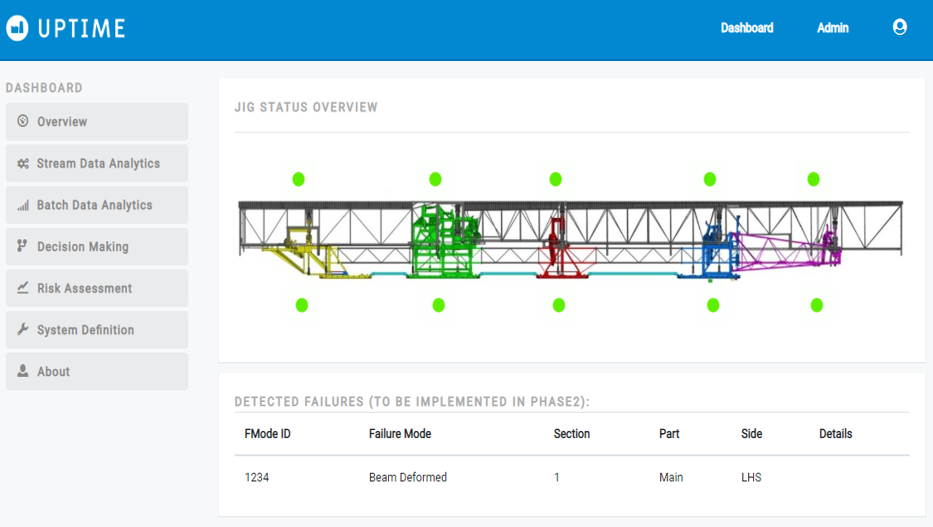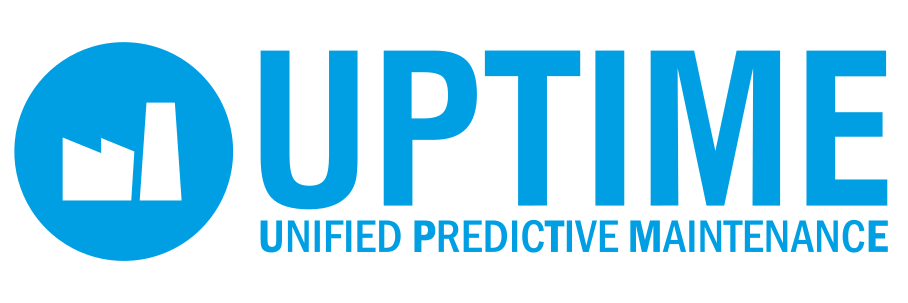Predictive Maintenance in Highly Complex Transportation Asset Operations
The Use Case of FFT deals with the maintenance of manufacturing equipment within the aviation sector. FFT’s Hoisting Equipment comprises Fittings to be mounted at aircraft components for assembly or transportation, as well as Lifting Gears that will be applied to lift and/or move aircraft components (such as engines, wings, vertical tails etc.) during the assembly of an airframe. As these tools, jigs and fixtures are important resources of the manufacturing / assembly processes, a high availability is expected. Shortages or low quality can hamper the production process significantly.
The customer expects from FFT processes to become better and more efficient over the time. Hence the planning of maintenance activities should become more transparent based on knowledge about the quantities to be expected for maintenance and the condition of the incoming fittings and lifting gears with the aim to reduce maintenance costs while keeping the number of fittings and lift gears as low as possible.
Interview with FFT Produktionssyteme GmbH & Co. KG
Interview with UPTIME project partner from FFT Produktionssyteme GmbH & Co. KG, Jeroen Versteeg, Senior Project Manager of FFT Aviation Systems & Test Operations Division based in Bremen. He shared his views with us on the benefits of predictive maintenance in large transportation asset operations as well as progress and some lessons learnt from the first implementation phase of the UPTIME Platform in the FFT Business Case.
How has FFT performed maintenance activities so far?
FFT’s division Systems & Test Operations has a growing number of maintenance projects, currently particularly in the aerospace industry, which in part involve larger numbers of highly complex assets, some of which are mobile and subjected to diverse environments and a wide range of unpredictable environmental stress factors. Due to the critical nature of the deployment of these assets, the requirements are both technically and organisationally very high. The need has arisen to increase efficiency in maintenance execution as well as in reporting to the client, who in most of our projects is responsible for the logistics coordination of their assets.
Until recently, maintenance has been performed relatively conventionally, although improvements in the area of automated asset and activity tracking have been implemented. Thus, it is FFT’s expectation that UPTIME can provide the framework to implement highly automated workflows to achieve an increase in efficiency.
How will UPTIME improve your maintenance service performance?
The improvements promised by UPTIME are expected to bring benefits to our maintenance service performance. This will affect all major processes: planning, execution, reporting, evaluation, improvement. This will be achievable because all information necessary for these processes will not only be acquired using various (mostly automatic) means, but also made accessible to the process stakeholders on-demand and in the form they can most effectively process.
A logistics planner, for example, would have access to an overview indicating location and availability status (e.g. “under maintenance, expected to be ready in three hours”) of an asset, while our maintenance operations manager could see a summary of anomalies in environmental stress for an asset necessitating ordering of certain spare parts in advance, which could dramatically decrease the down time of the asset. Also, the availability of historical data and effective evaluation and representation methods for this data is expected to show trends or areas of interest which can be used for continuous improvement of both maintenance of the assets and technical optimisation of the assets themselves.

What have been achieved so far during the initial implementation phase of the UPTIME Platform in the FFT Case?
Our approach for the UPTIME project has indeed been quite pragmatic with primary focus on two topics:
– Development of _SENSEnodes, part of a compact and versatile mobile data acquisition and transmission platform based on the IoT paradigm
– Conducting dedicated measurement campaigns to acquire representative data
The main goal of these activities is to verify the functional requirements and performance of the _SENSEnodes and to enable development of the data handling workflow (including automatic filtering, detection, analysis, prediction and visualisation functionalities) within the UPTIME Platform. The results are promising in terms of the quality achieved in the hardware and software within the limited time available.
What have been the main challenges in the development and implementation phase?
Naturally, the technical consortium partners have been focusing on the development of their respective components/functionality for the unified UPTIME Platform, “unified” being the critical keyword here. One challenge therefore was to start integration early enough, or at least keep the necessary focus on the interfaces between the components. Due to active and structured knowledge management within the project, this was actually handled very well. Lesson learnt: a large multi-disciplinary project should have a party who is explicitly responsible for knowledge management.
Moreover, to enable (semi-integrated) component tests, another significant challenge was to provide a representative environment to test the data acquisition components; especially field trials with customer equipment were difficult to organise due to different stakeholder priorities. The generation of mock data as input for the rest of the workflow has been a viable alternative, although the development of reliable state-detection functionality on our mobile platform will require more realistic field deployments.
What are FFT’s expectations from the UPTIME Platform ?
FFT plans to achieve meaningful operational capability of the mobile data acquisition platform very soon, which is critical for the further implementation and integration of representative workflows using the UPTIME Platform. Another capability critical to the effectiveness of UPTIME as a flexible and comprehensive solution is the ability to define and represent complex but diverse assets in the data model. In combination with a successful further integration of the functional components and the implementation of a customisable, role-based user interface to fulfil the diverse usage requirements of different types of end-users, this is expected to result in a highly versatile and effective tool to comprehensively manage maintenance workflows of complex assets.
In summary, UPTIME is expected to enable our maintenance service to focus more on the primary maintenance processes by automating secondary processes such as data acquisition, processing and reporting, while continuously providing relevant data to improve all processes.
PUBLIC DELIVERABLES
DELIVERABLE 4.1: Business Case, Conceptualisation and Evaluation Strategy
D4.1 provides comprehensive definition of the FFT business case, including as-is and to-be businesses process and identification of FFT stakeholders/business, system and technical requirements.
SCIENTIFIC PUBLICATIONS
-
Towards a Unified Predictive Maintenance System - A Use Case in Production Logistics in Aeronautics
Hribernik, K., Von Stietencron, M., Bousdekis, A., Bredehorst, B., Mentzas, G., Thoben, K.D. (2018) - Procedia Manufacturing, vol 16, 131-138, Elsevier
-
Using Sensor Data for Predictive Maintenance of a Complex Transportation Asset
Bredehorst, B., Peters, O., Versteeg, J., Neuhaus, M., Hans, C., Von Stietencron, M (2018). IN: Zelm, M., Jaekel, F.W., Doumeingts, G. and Wollschlaeger, M. (ed.) Enterprise Interoperability: Smart Services and Business Impact of Enterprise Interoperability, First Edition. ISTE Ltd and John Wiley & Sons, Inc., pp. 239 – 245
RELATED ARTICLES
LIVE WEBINAR: 10 Dec 2020, 11:00 – 12:30 CET – UPTIME Predictive Maintenance – Lessons Learned and Best Practices in the Aviation Industry
UPTIME Predictive Maintenance: Lessons Learned and Best...
Read MoreUPTIME at ForeSee Cluster Webinar Series, 26 Nov 2020, 16:00 – 17:30 CET
UPTIME at ForeSee Cluster Webinar Predictive Maintenance...
Read MoreUPTIME 4th Newsletter – Edition 09/2019
PDF Sign up 19.09.2019 WELCOME TO THE...
Read MoreUPTIME_DECIDE
UPTIME_DECIDE Proactive Decision Making Module https://www.youtube.com/watch?v=TyGj0BO3aJs&t=12s On...
Read MoreUPTIME Partners received Best Paper Awards at the 7th International Conference on Through-life Engineering Services in Cranfield, UK
Cranfield, 06. – 07.11.2018 UPTIME Partners received...
Read MoreUPTIME 1st Newsletter – Edition 2018/10
PDF Sign up 10.10.2018 WELCOME TO UPTIME...
Read More